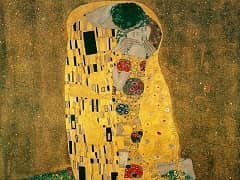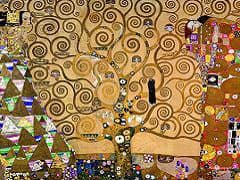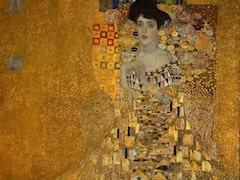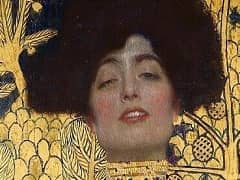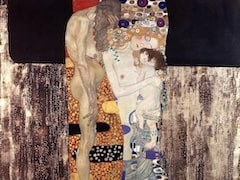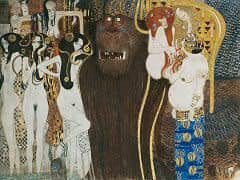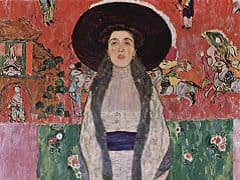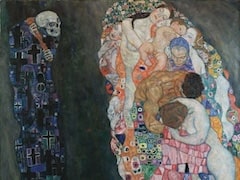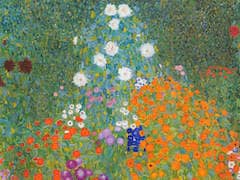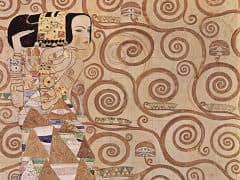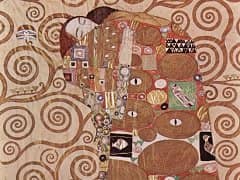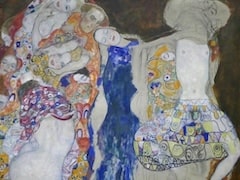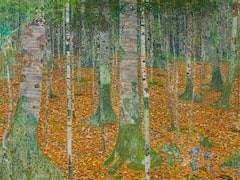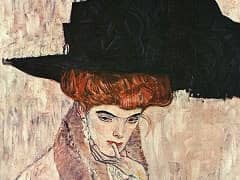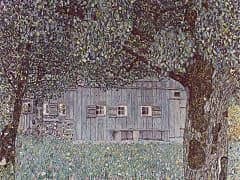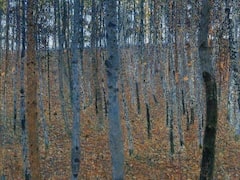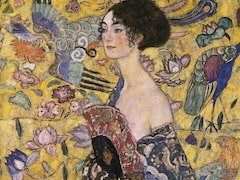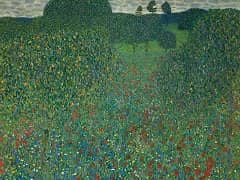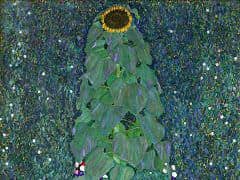Life is a Struggle, 1903 by Gustav Klimt
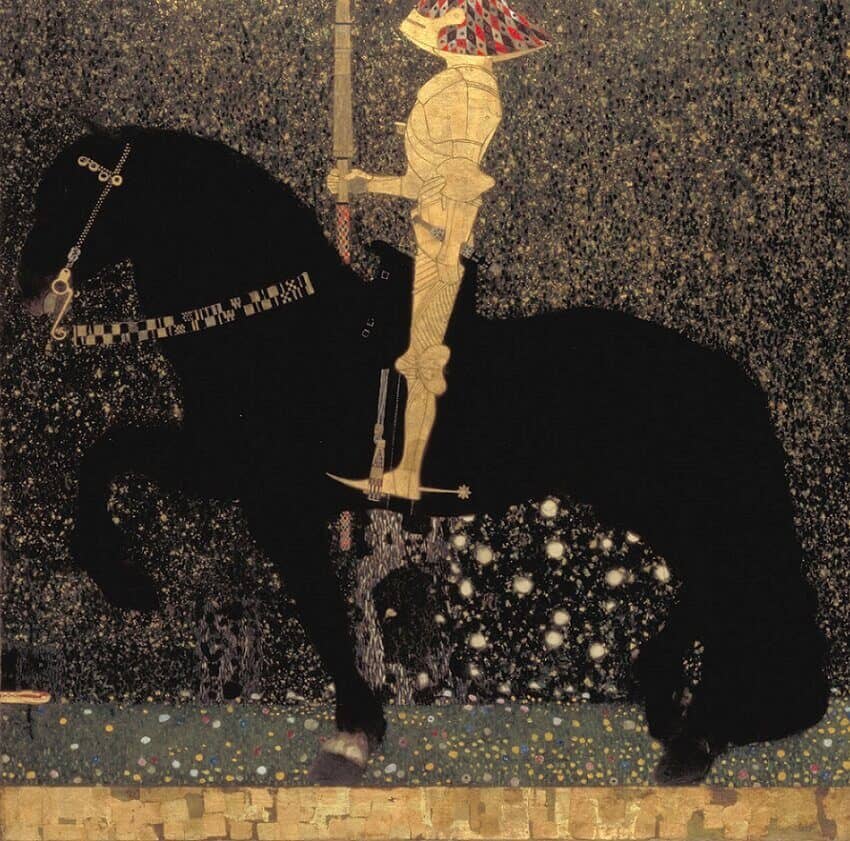
No doubt inspired by the resplendent majestic Knight Templar from the 1902 The Beethoven Frieze, the golden V, knight is now mounted and ready for battle. The helmet with its heraldic colors,
by his feet in the frieze, is now on his head, the colors more vividly highlighted.
Despite the horse's lifted hoof, the work has a static medieval quality, as though lifted from an ancient frieze or mural. The probable influence was Klimt's two 1903 trips to Ravenna, Italy, to see
the fabulous golden Byzantine mosaics. They had a profound effect on his work. Correspondingly, this painting has a gorgeous mosaic quality, expressed in the exquisite bridle, lance handle, and
helmet, as well as in the backdrop's rich stippling.
This effect, combined with the three-foot (one-metre) squared composition, recalls Klimt's landscape work and esoteric belief in the square's balancing power. It also underlines the Knight Templar's
esoteric symbolism, and the Symbolists' calling to "seek the symbol behind the appearance, the eternal idea beneath the form." Here, Klimt, as art's knight, takes up the fight. The painting, exhibited
in the 1903 Secession Exhibition, was bought by the steel magnate, Karl Wittgenstein, whose daughter Klimt painted the following year.

